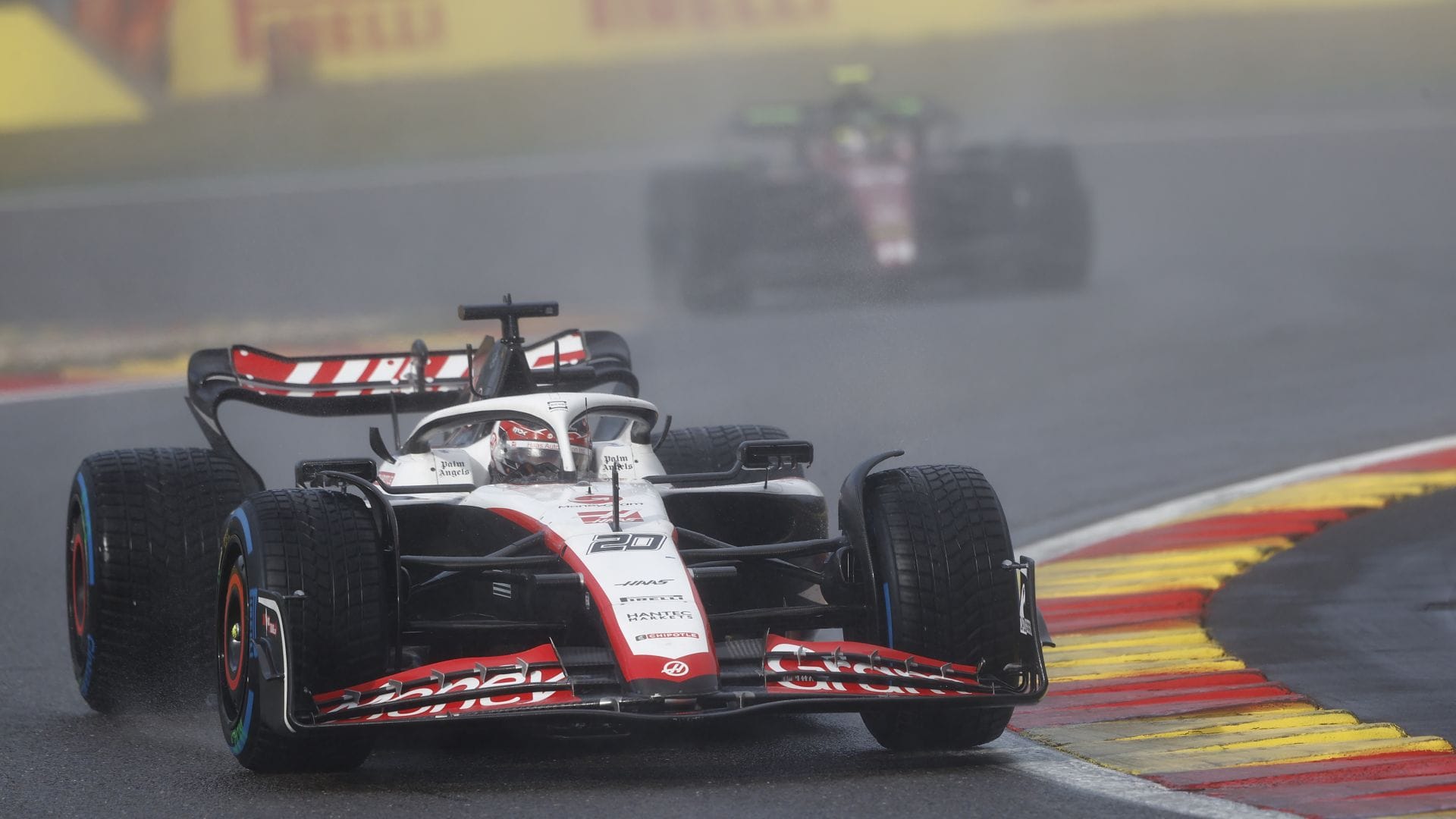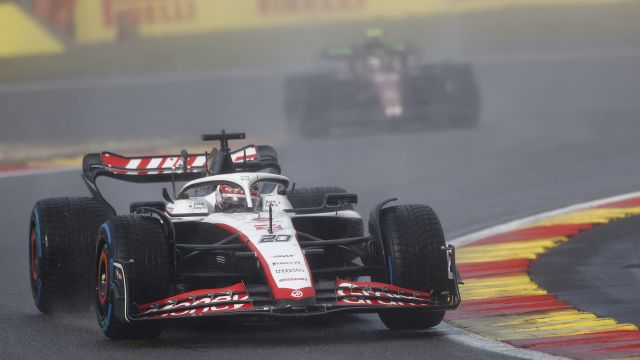What Is The Purpose Of A Chicane?


You’ve probably found yourself watching an F1 race and wondering, “What is the purpose of a chicane?” It’s a question that many fans, both new and seasoned, often ask as they try to grasp the intricacies of the sport.
Chicanes are specially designed series of corners in a Formula 1 racing track that are implemented to reduce the speed of the racing cars, enhancing safety and introducing a strategic element to the race. They are a vital part of the track design, influencing the overall strategy and outcome of the race.
In this article, we will delve deeper into the world of Formula 1 racing, focusing on the critical role that chicanes play in shaping the strategy and ensuring the safety of the drivers. We will explore what a chicane is, its purpose, and the consequences of missing a chicane during a race. By the end of this article, you will have a comprehensive understanding of why chicanes are a fundamental part of F1 racing, enhancing your viewing experience the next time you watch a race.
A Detailed Explanation on the Purpose and Functionality of Chicanes in F1
The Anatomy of a Chicane
A chicane is a serpentine curve on a race track, essentially a combination of several corners that forces drivers to reduce their speed. Understanding the anatomy of a chicane can provide a deeper insight into its purpose in Formula 1 racing. The design of a chicane is meticulously planned to ensure it serves its primary function: to slow down the cars and prevent high-speed accidents.
The Strategic Element Introduced by Chicanes
Chicanes not only serve a safety purpose but also introduce a strategic element to F1 racing. Drivers and teams meticulously plan how to navigate chicanes to gain a competitive edge. The right approach to a chicane can mean the difference between winning and losing a race, making it a focal point in the race strategy.
Consequences of Missing a Chicane
What happens if you miss a chicane in F1? Missing a chicane can have serious repercussions. Drivers might face penalties, including time penalties, which can significantly affect their position in the race. Moreover, missing a chicane can potentially lead to dangerous situations, emphasizing the importance of navigating them correctly.
Does Every F1 Track Have a Chicane?
While not every F1 track features a chicane, most of them do as it is a crucial safety feature. Tracks are designed with various elements, including chicanes, to test the skills of the drivers and to ensure a safe racing environment.
Corner Cutting: Is it Illegal in F1?
Corner cutting, which often occurs at chicanes, is indeed considered illegal in F1 racing. This maneuver involves a driver taking a shortcut through a chicane, essentially bypassing it to gain an advantage. The FIA (Fédération Internationale de l’Automobile) has strict rules against this, and drivers caught corner cutting are penalized to maintain fairness in the race.
The Penalties Involved
Penalties for corner cutting can range from time penalties to even more severe repercussions, including disqualification from the race. It is a serious offense as it not only provides an unfair advantage but also poses safety risks.
The Role of Stewards in Monitoring
F1 Stewards play a crucial role in monitoring the race and ensuring that no driver engages in corner cutting. They use advanced technology, including various camera angles and telemetry data, to keep a close eye on the drivers’ actions during the race.
The Design and Evolution of Chicanes
Chicanes have evolved significantly over the years, with track designers constantly working to improve their functionality and safety features. Let’s delve into the design and evolution of chicanes in F1.
The Early Designs
In the early years of F1 racing, chicanes were simple and primarily aimed at reducing speeds. However, as the sport evolved, so did the complexity and strategic importance of chicanes, introducing a new dimension to the race strategy.
Modern Day Chicanes
Modern day chicanes are marvels of engineering, designed with meticulous attention to detail to ensure safety while promoting exciting and strategic racing. They are crafted to offer opportunities for overtaking, adding a thrilling element to the race.
The Iconic Chicanes in F1 History
As we explore the purpose of chicanes in Formula 1, it is worth noting some of the most iconic chicanes that have left a mark in the history of the sport.
The Bus Stop Chicane
One of the most famous chicanes is the “Bus Stop” chicane at the Spa-Francorchamps circuit in Belgium. It has witnessed numerous memorable moments, including breathtaking overtakes and dramatic crashes.
The Variante Ascari
The Variante Ascari is another iconic chicane located at the Monza circuit in Italy. It is known for its high-speed approach and technical complexity, offering a true test of a driver’s skill and precision.
The Variante della Roggia
Another notable chicane is the Variante della Roggia, also situated at the Monza circuit. This chicane presents a significant challenge to drivers due to its tight corners and the necessity for precise braking. Over the years, it has been the site of many iconic moments in F1 history, showcasing both the skill and strategy involved in navigating chicanes successfully.
The Challenge it Presents
Navigating the Variante della Roggia requires a deep understanding of the vehicle’s dynamics and a well-calculated approach to maintain optimum speed without compromising safety. It is a section where drivers can showcase their skill and strategy to gain an advantage in the race.
The Memorable Moments
Over the years, the Variante della Roggia has witnessed incredible overtakes and heart-stopping crashes, adding to the rich history of F1 racing. It stands as a testament to the vital role chicanes play in adding excitement and strategy to the sport.
The Singapore Sling
The Singapore Sling was a notorious chicane in the Singapore Grand Prix. It was eventually removed due to the high risk of accidents and the general dislike from the drivers. Let’s delve deeper into the history and characteristics of the Singapore Sling.
Why it was Removed
The Singapore Sling was removed because it posed a significant risk of accidents, and it was not well-received by the drivers. Its design was considered to be too aggressive, leading to numerous incidents over the years.
The Legacy it Left Behind
Despite its removal, the Singapore Sling left a lasting impression in the F1 world. It is remembered as one of the most challenging chicanes, a place where only the bravest drivers dared to push the limits, showcasing the fine line between bravery and recklessness in the sport.
The Swimming Pool Chicane
The Swimming Pool chicane is a famous section of the Monaco Grand Prix circuit. It is known for its tight corners and the high level of skill required to navigate it successfully. Let’s explore the characteristics and memorable moments associated with this chicane.
The Unique Characteristics
What sets the Swimming Pool chicane apart is its location, surrounded by barriers with no room for error. It demands precision and skill, offering a true test of a driver’s abilities.
Memorable Races
The Swimming Pool chicane has been the backdrop for many memorable races, witnessing incredible skill displays and heart-wrenching crashes. It remains a significant part of the Monaco Grand Prix, adding to the excitement and unpredictability of the race.
What Is The Purpose Of A Chicane – Final Thoughts
As we reach the end of our deep dive into the world of chicanes in Formula 1, it is clear that these intricate track designs play a pivotal role in shaping the strategy and safety protocols of the sport. You have learned about the various iconic chicanes that have graced the F1 circuits, each with its unique characteristics and challenges that test the mettle of the world’s best drivers.
Moreover, understanding the nuances of chicanes, from the strategic planning involved in navigating them to the penalties incurred from missing or cutting corners, adds a new layer to your appreciation of the sport. It unveils a world of meticulous planning, precision, and skill that goes into every race, enhancing your viewing experience as you find yourself delving deeper into the strategies employed by teams and drivers.
As you tune in to the next F1 race, remember the vital role that chicanes play in adding excitement, strategy, and safety to the sport. We encourage you to watch with a keen eye, appreciating the skill and strategy that goes into navigating these challenging sections of the track. Here’s to a richer, more informed F1 viewing experience!
What Is The Purpose Of A Chicane – FAQs
What does “chicane” mean in F1?
In F1, a “chicane” refers to a series of tight corners in succession, designed to slow down the cars for safety reasons and to introduce a strategic element to the race.
Are chicanes present in all F1 tracks?
No, not all F1 tracks have chicanes. However, most tracks incorporate them as they are essential for safety and to add a strategic depth to the race.
What happens if a driver misses a chicane in F1?
If a driver misses a chicane in F1, they might face penalties such as time additions to their race time. It is essential to navigate chicanes correctly to avoid penalties and maintain a good position in the race.
Is it common to see accidents at chicanes?
Yes, chicanes are often spots where accidents occur due to their tight corners and the reduced speed required to navigate them. They are areas where driver skill and vehicle performance are tested to the fullest.
Can a driver gain a strategic advantage through chicanes?
Absolutely, a driver can gain a strategic advantage through proper navigation of chicanes. It involves a deep understanding of the vehicle dynamics and a well-calculated approach to maintain optimum speed without compromising safety.
Are there famous chicanes in the F1 history?
Yes, there are several famous chicanes in F1 history, including the Bus Stop chicane at the Spa-Francorchamps circuit and the Variante Ascari at the Monza circuit, among others. These chicanes are known for their unique characteristics and the memorable moments they have hosted in F1 history.





